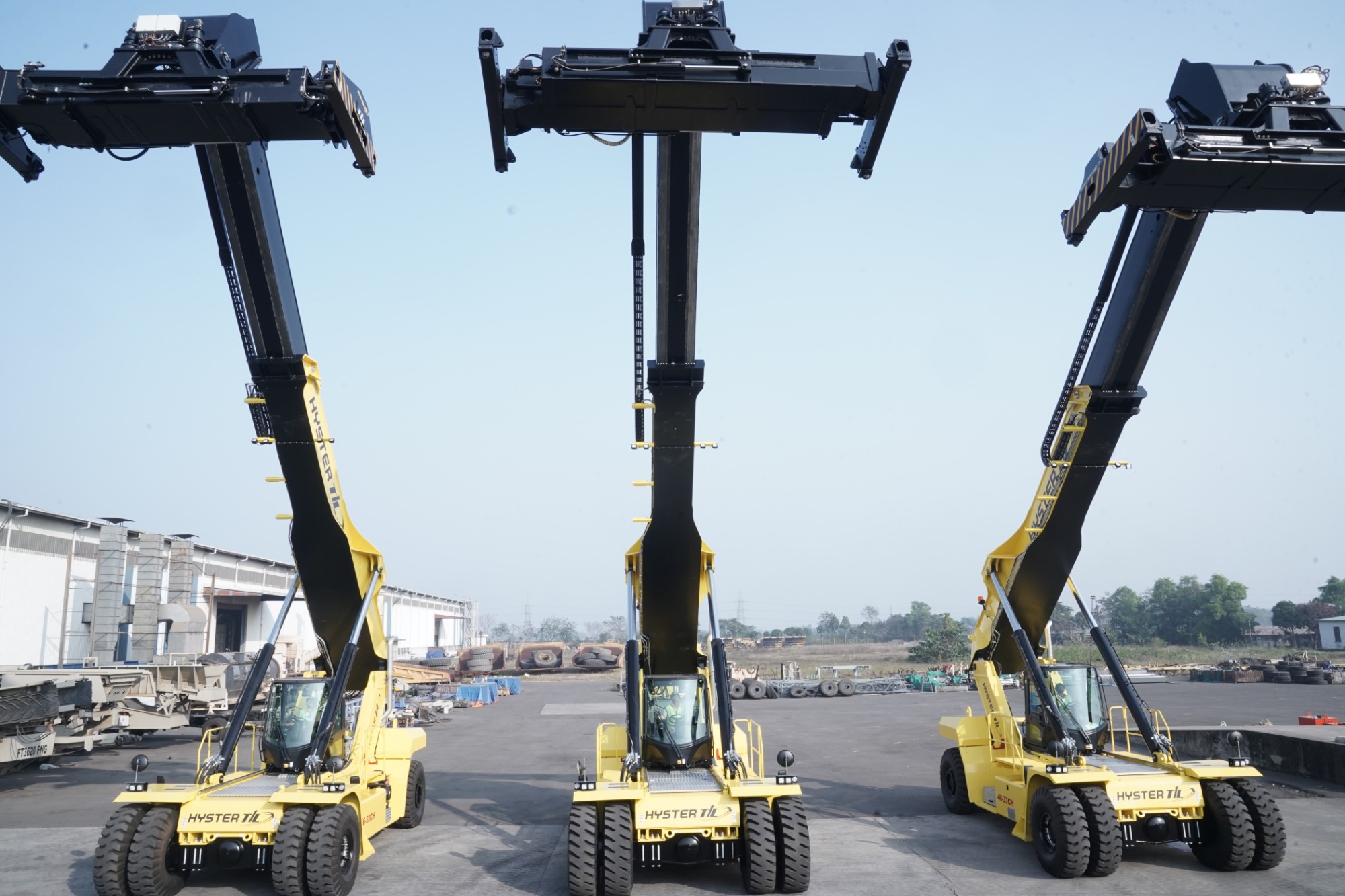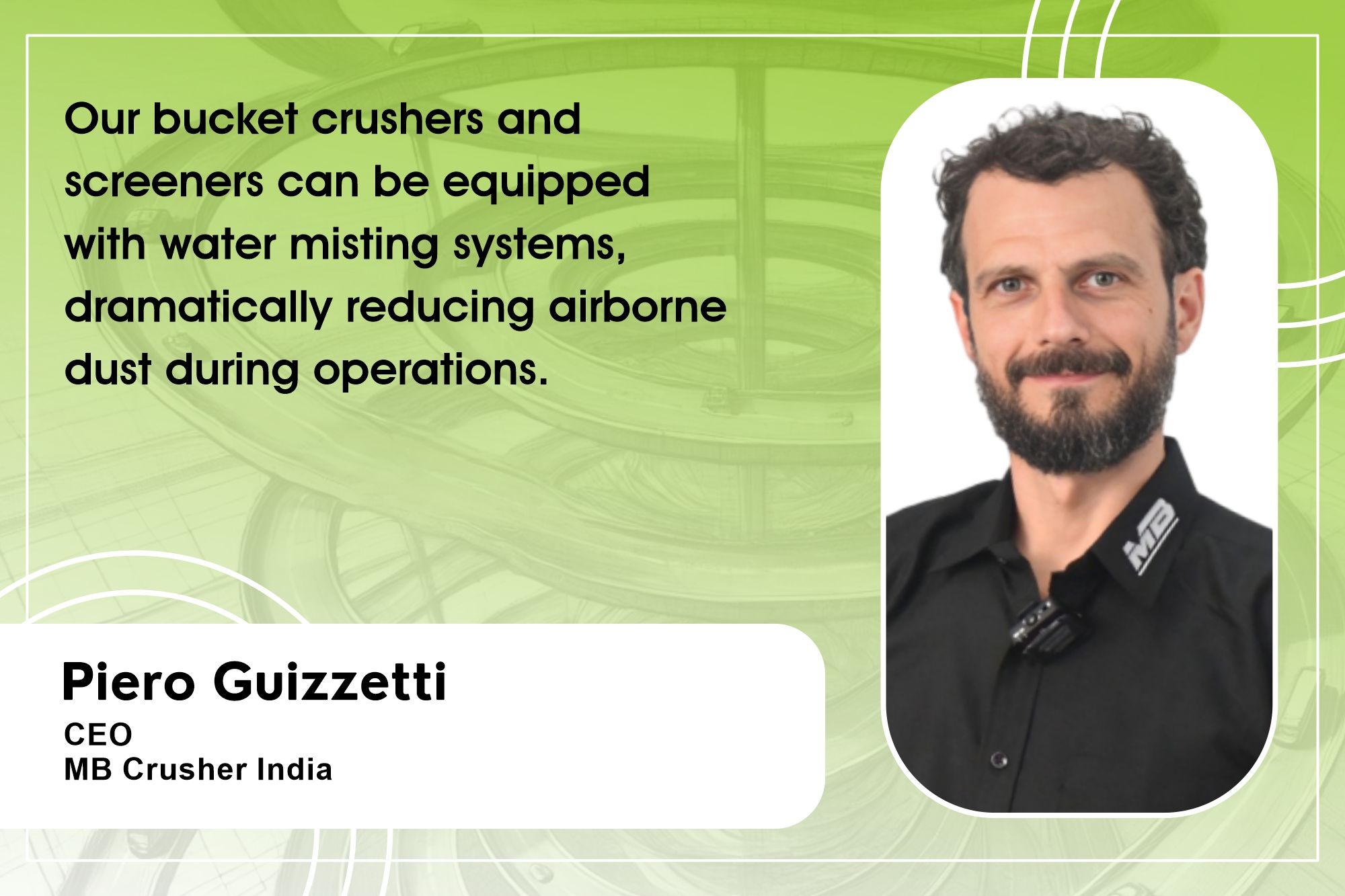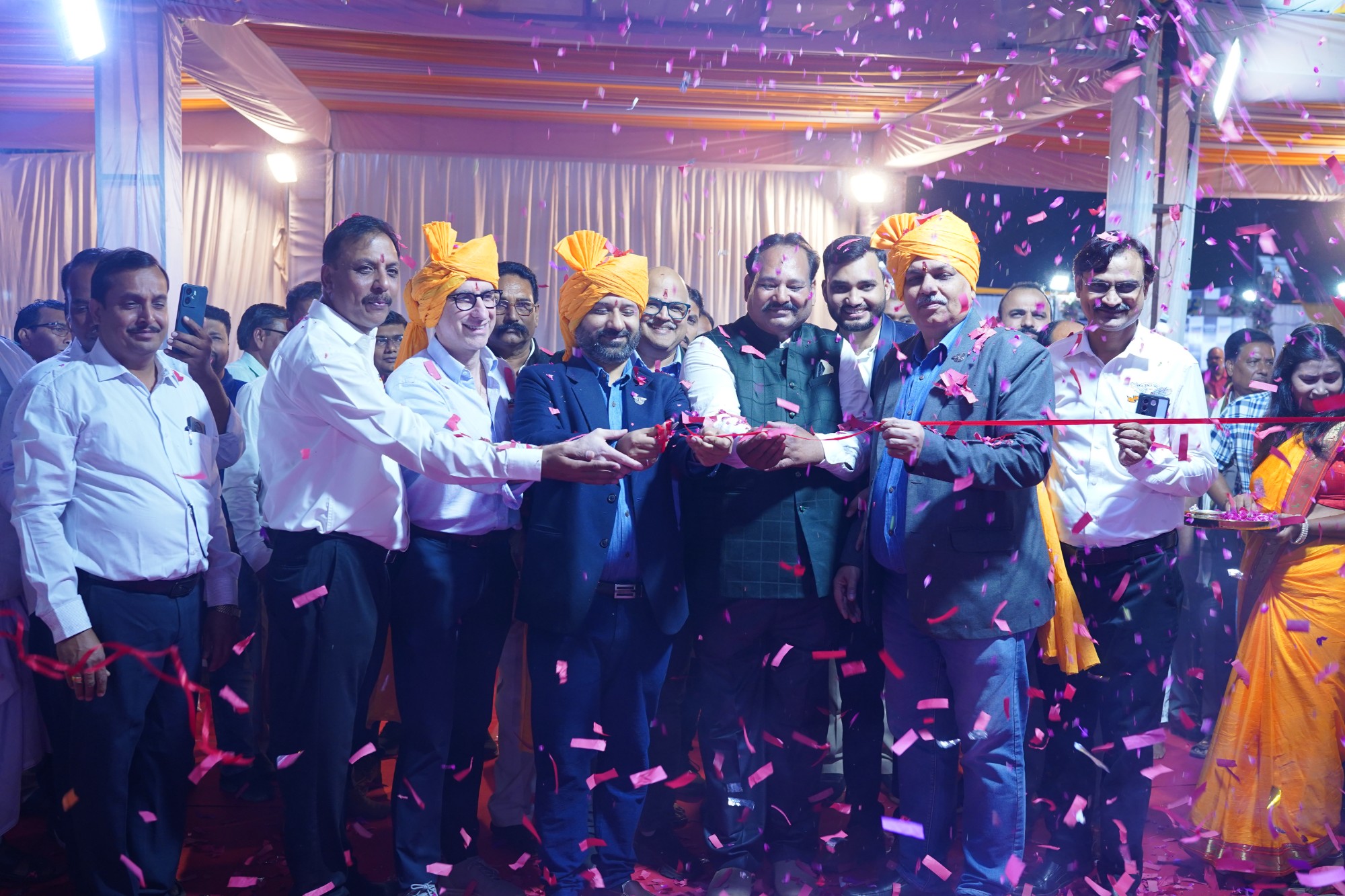Electrified earthmoving equipment to power sustainability
By Edit Team | September 7, 2023 1:18 pm SHARE

In this in-depth Intro – In this in-depth discussion, we explore the profound influence of battery-powered earthmoving equipment in the context of India. We delve into the intricate details of these advancements and their far-reaching implications, reshaping the landscape of infrastructure projects and ushering in a sustainable and innovative era.
Significant developments are unfolding on the horizon in the realm of earthmoving equipment and infrastructure development. India, a rapidly developing nation is witnessing a dynamic transformation in its earthmoving equipment industry. The demand for advanced construction Machinery is surging as the country experiences extensive urbanisation and ambitious infrastructure development projects. In this context, it becomes imperative to examine the evolving trends in earthmoving equipment within India, which facilitates efficiency and productivity and align with global sustainability initiatives. The following discussion offers a comprehensive outlook on the current industry trends and future projections, as shared by prominent experts.
Mr. Dheeraj Panda, the Chief Operating Officer (Sales, Marketing, and Customer Support) at Sany Heavy Industry India Pvt. Ltd., underscores the substantial growth in earthmoving equipment. He attributes this growth to the surge in road development programs initiated by central and state governments. With urbanisation on the rise and major national highway projects underway, there’s a significant demand for road construction equipment, including earthmoving machinery like hydraulic excavators, mobile cranes, piling rigs, and motor graders.
Mr. Surat Mehta, Head of SDLG, offers a positive outlook for the construction equipment sector. He projects a substantial 15 percent growth in 2023, driven by ongoing infrastructure expansion in key areas such as roads, railways, urban development, ports, and mining. Surat anticipates this strong demand to persist, with a compound annual growth rate (CAGR) exceeding 10 percent, with excavators and Backhoe loaders leading the way.
Mr. Amit Bansal, the Director of Sales & Marketing at Caterpillar India, highlights the role of India’s population growth and urbanisation in propelling infrastructure development. Government initiatives like Bharat Mala and the Smart Cities mission are significant catalysts, along with emerging trends such as AI, 5G, 3D printing, electrification, autonomous machinery, and advanced materials.
Mr. Puneet Vidyarthi, Head of Marketing and Business Development at CASE Construction Equipment, emphasises how urbanisation and population growth fuel the demand for efficient machinery. Sustainable practices are also gaining momentum, driving the need for technologically advanced and eco-friendly equipment. Case Construction Equipment stands poised to lead in innovation and sustainability.
Advanced backhoe loaders and excavators impact project efficiency and productivity
Recent advancements in backhoe loaders and excavators are revolutionising construction project efficiency and productivity. Surat highlights the pivotal role of intelligent electronic controls in optimising hydraulic energy usage. These controls enhance fuel efficiency and boost productivity by minimising energy losses in the equipment.
Mr. Amit India underscores Caterpillar’s impressive innovations, including fuel-efficient engines that meet stringent emissions standards, reducing operating costs and environmental impact. They offer flexibility with engines that run on blended fuels and are biodiesel-ready. Caterpillar’s machines in India comply with the rigorous Bharat Stage V emission norms. Advanced telematics provides real-time data on equipment performance, location, and maintenance needs, enhancing overall efficiency. Improved hydraulics reduce fuel consumption, while automated features like automatic bucket control and GPS-guided systems enhance precision, efficiency, and operator safety. Mr. Puneet discusses how these advancements are transforming construction projects. Telematics enable real-time monitoring, proactive maintenance, and reduced downtime due to unexpected malfunctions. Backhoe loaders are now more versatile, handling digging and loading tasks with a single machine. CASE’s excavators, equipped with the CASE Intelligent Hydraulic System offers improved fuel efficiency and faster cycle times, resulting in a 5 percent increase in productivity. Their 770 NXe Loader Backhoe, with advanced technology and efficient engines lead to substantial fuel savings of up to 24 percent.
Technical strategies to overcome challenges for EPC contractors and project consultants
Equipment procurement is an important factor in the success of a construction project. Topography, logistics, technology, availability of labour and finance are some of the parameters that help us decide on the type of procurement. Mr. Surat highlights their use of advanced electronic controls for engines and hydraulics, significantly boosting efficiency. These controls improve performance and create ergonomically designed operator environments, reducing operator fatigue and allowing for longer work periods. Amit discusses their customer-centric approach, leveraging technology solutions and an extensive dealer network to maximise fleet efficiency and profitability. They enhance maintenance and fuel efficiency with features like ECO mode and advanced filtration technology while improving production efficiency through the AccuGradeTM Grade Control System. The redesigned cab provides superior operator comfort. Caterpillar takes it further by offering connectivity solutions like VisionLink® and Cat Productivity, which monitors machine operating data to increase uptime and profitability. VisionLink provides a comprehensive fleet overview and Cat Productivity is a cloud-based tool for reducing fuel costs and enhancing efficiency. Mr. Puneet takes this opportunity to address the challenges by sourcing components locally in India, optimising costs, and providing cost-effective equipment. They invest in operator skill development through the Skill Development Centre, supporting the Skill India Mission, and offering training in operating loader backhoes to create skilled professionals. Additionally, they run a training centre at their Pithampur plant and explore partnerships with training organisations to nurture new entrepreneurs.
Battery-operated equipment is shaping future infrastructure projects
Mr. Surat sees no major barriers to adopting battery-operated machines. SDLG has pioneered this shift in India with their 5-ton electric wheel loaders, prioritising on-site support and safety awareness while partnering with clients to deliver the latest technology and genuine value. At the same time, Amit underscores the transition to battery-operated equipment, a vital step toward net-zero emissions future. These machines offer sustainability benefits by reducing carbon footprints in infrastructure projects, encouraging decentralised energy systems, improving air quality, and lowering operational costs through reduced fuel consumption and maintenance. On On the other hand, Puneet acknowledges challenges like higher initial costs, limited charging infrastructure, and battery performance concerns. However, incentives such as reduced operational costs, lower emissions and environmental compliance can drive adoption. Battery-operated equipment promotes greener construction practices, reduces noise pollution, and enhances job site safety, with potential for further growth as technology advances and charging infrastructure expands. Case Construction Equipment is actively investing in research and development for electric and hybrid construction equipment, as exemplified by the Case 580 EV, the industry’s first fully electric loader backhoe with zero emissions.
While full electrification may take time to permeate the construction sector, it signifies a future powered by electric drivetrains, sustainable fuels, and advanced technology. The transition to battery-operated equipment signals a greener future, reducing carbon footprints and improving sustainability. Challenges like initial costs and charging infrastructure are balanced by incentives, pushing the industry towards eco-friendly practices. The above insights reveal a dynamic and promising future for the earthmoving equipment industry as it adapts to evolving infrastructure demands, green technologies, and a commitment to sustainability.
Spokesperson & Quotes –
Surat Mehta, Head – SGLG Business India.
We expect 15 percent growth in 2023, driven by infrastructure expansion.
Amit Bansal, Sales & Marketing Director, Building Construction Products (BCP) Division, Caterpillar India.
Battery-operated equipment promotes sustainability, reduces emissions, and lowers operational costs for infrastructure.
Puneet Vidyarthi, Head-Marketing & Business Development – India & SAARC, CASE Construction Equipment.
Budget constraints, regulatory intricacies, supply chain disruptions, and skilled labour shortages challenge infrastructure projects.
Dheeraj Panda, – Chief Operating Officer (Sales, Marketing & Customer Support), Sany India & South Asia.
Urbanisation drives substantial growth in earthmoving equipment, boosting road development programs.
Cookie Consent
We use cookies to personalize your experience. By continuing to visit this website you agree to our Terms & Conditions, Privacy Policy and Cookie Policy.




































-20240213125207.png)

























